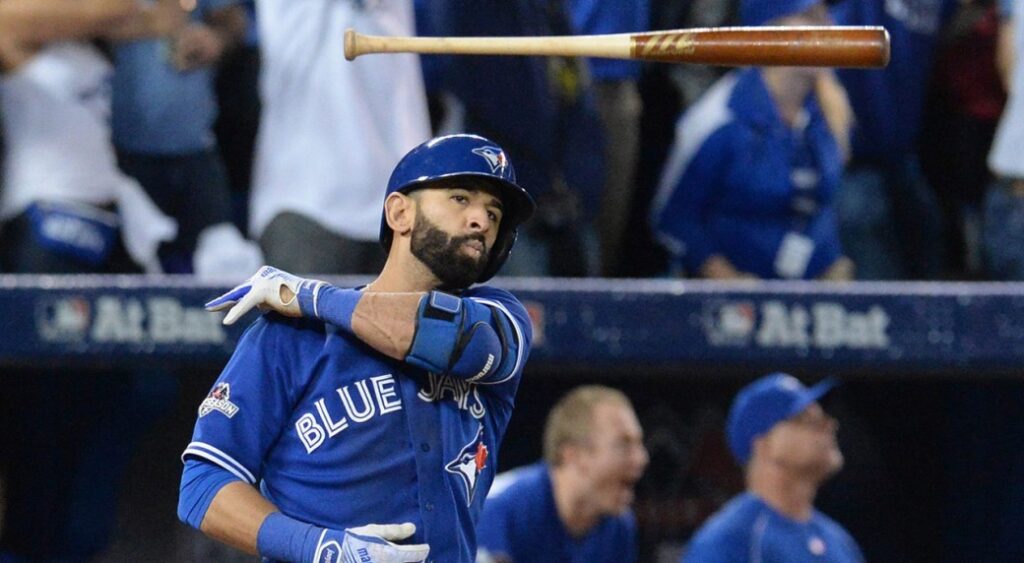
José Bautista: A Case Study in Multi-Faceted Timing
By Ken Cherryhomes ©2025
Timing in hitting is not a matter of mastering any one aspect of the process. It is a layered procedure, composed of multiple facets. Syncing with the pitcher is one aspect of timing. Deciding when to initiate the swing is another, completely separate facet. And accounting for the time it takes to execute that swing is a third. All are separate but essential, interrelated components.
Most discussions of timing conflate these elements, but in reality, each can evolve independently, and each carries different performance consequences. José Bautista’s mid-career transformation offers a clear, instructive case study of how improving one layer of timing, without materially changing the others, can reshape a player’s production, while leaving others unchanged, exposes the limits of his transformation—specifically, the absence of any real improvement in bat-to-ball performance, as later analysis makes clear.
In this case study, we can observe how Bautista’s elite power allowed him to compensate for a relatively stagnant bat-to-ball rate. For many, the surge in production would be viewed as sufficient progress. However, it obscured an underlying, still unaddressed deficiency. Solving for one aspect of timing, while leaving others deficient, rarely produces a complete hitter, and often results in no significant improvements. Exceptional power, as Bautista demonstrated, can mask flaws that, for most hitters without that physical advantage, remain limiting factors.
In 2010, Bautista reported a “timing epiphany,” crediting his success to better syncing his load and preparation with the pitcher’s delivery. A detailed examination of his performance metrics confirms part of this narrative—but also exposes the limits of what changed.
From 2010 through 2015, Bautista’s O-Swing%, his tendency to chase pitches outside the strike zone, dropped dramatically, falling from 25.4% in 2009 to a consistent range between 15–20%. This improvement indicates that Bautista’s sync timing, or his ability to get into a ready position earlier, had sharpened significantly. With better pre-swing positioning, he could see the ball longer, resist marginal pitches, and swing only at those he could drive. His power numbers exploded accordingly.
However, his Contact% and Z-Contact%, the true bat-to-ball measures, tell a different story. Despite his newfound discipline and surge in power when he was connecting, Bautista’s ability to make contact on pitches inside the strike zone remained largely unchanged. His Z-Contact% hovered between 85% and 87%, and his overall Contact% fluctuated narrowly around 76–78%. His strikeout rates, though modestly improved, remained relatively high. These facts reveal that while Bautista better selected which pitches to swing at, his raw bat-to-ball interception ability did not fundamentally improve.

Further evidence of this unresolved deficiency comes from accounts of Bautista’s in-season adjustments under Cito Gaston’s staff. Gaston resorted to shouting “Now!” from behind the batting cage during practice sessions to force Bautista to initiate his swing earlier against higher velocities. While this external cue temporarily served to prompt his launch timing relative to the pitch, it did not develop his internal ability to self-calibrate swing initiation based on live pitch information.
After Bautista became better at preparing earlier and selecting pitches more carefully, his underlying perception-action coupling—reading pitch flight, predicting arrival, and triggering the swing at the optimal moment—remained underdeveloped. This reliance on external cues, rather than internalized timing regulation, explains why his contact rates remained stagnant despite improved swing decisions and elevated power outcomes.
Bautista’s case underscores a critical but often misunderstood reality: timing is multi-faceted.
- Sync timing—getting into a ready position—extends pitch perception time, enabling more decision time and improved swing selection.
- Decision timing—choosing when to initiate the swing—relies on perceptual skills distinct from mechanical syncing.
- Execution timing—knowing the swing’s inherent latency—closes the loop, ensuring the barrel meets the ball at the intended collision point.
Bautista mastered sync timing but did not materially enhance his decision or execution timing. His success was built on better pre-swing preparation which led to better selectivity, not on an improvement in raw bat-to-ball ability.
This distinction matters. While players may experience performance gains by improving a single facet of timing, such cases are rare and often depend on exceptional compensatory tools. In Bautista’s case, elite power masked deficiencies that would have limited most hitters. For the vast majority, solving the entire timing structure—syncing, decision, and execution—is essential for sustainable performance. Timing should not be reduced to a single concept; it is an ecosystem of interdependent processes, each critical to the act of hitting.